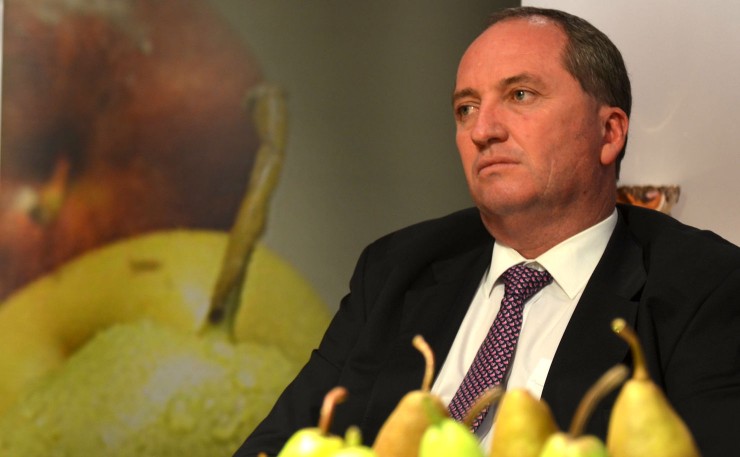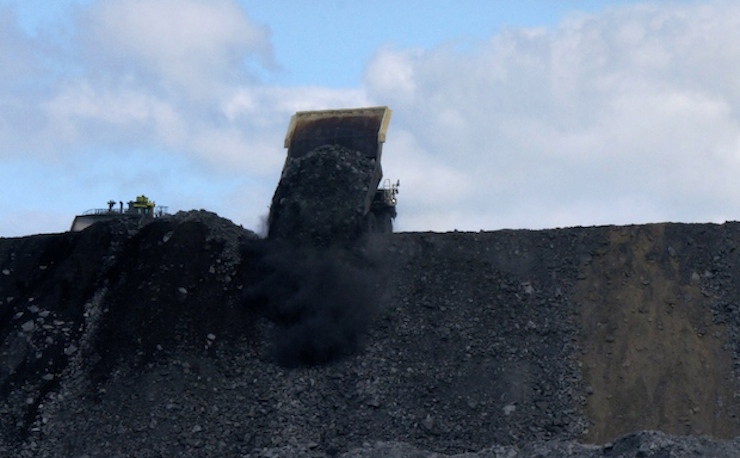In a world where coal has no future, the proposed Adani mine should not be given serious consideration. Even if climate change were not a pressing problem, and even if thermal coal prices were to rise and stay high, the project would bring little benefit to Australia, writes Ian McAuley.
Dear reader, I’m asking you to imagine the unimaginable.
Imagine that Adani’s proposed Carmichael coal mine in the Galilee Basin is economically viable.
Imagine that there is an assured market for coal over the life of the mine – the next 40 to 60 years. Thermal coal prices will recover and stay high. That’s because developments in solar, wind and other renewable technologies will grind to a halt. There will be no further improvements in battery technologies. In spite of worsening damage from extreme weather events and the collapse of some of the world’s agricultural regions, governments will follow Trump’s lead and abandon efforts to address global climate change.
OK, it’s hard to put yourself into the mindset of Barnaby Joyce, Mathias Cormann or Matthew Canavan, and it’s even harder to suspend disbelief as some of the more intelligent members of the Coalition Government have done, but have a go for five minutes.
The trouble is that the Carmichael mine would still bring no worthwhile economic benefits to Australia, and would certainly not justify a $900 million concessional loan from Joyce’s National Party Slush Fund (aka “The Northern Australia Infrastructure Facility”).

There would be some new jobs, but not many. Perhaps 1,500 directly, and possibly an equal number indirectly through “multiplier” effects in other industries. Open-cut mining is very capital-intensive, and much of that capital, such as draglines, would have to be imported.
The main claimed economic benefit of investment projects, however, is in terms of a boost to GDP. Also governments, federal and state, can improve their fiscal position – company income tax for the Commonwealth, and from mining ventures royalties for the states.
In general, a higher GDP makes its way through to higher living standards for Australians. But not always, and foreign-owned extractive industries provide an important exception. That’s because profits accrue to foreign owners, and apart from early stage re-investment, most profits are repatriated in the form of dividends. This is particularly so for a company exploiting a finite resource, in contrast to those foreign-owned firms in manufacturing industries which tend to keep re-investing so long as they have a presence in Australia.
Furthermore, large multinationals are notorious for profit-shifting and other forms of tax avoidance. Adani already has a neat contrivance to shift profits from the Carmichael mine to the Cayman Islands.
That leaves royalties for the Queensland Government as the only reasonably certain cash flow back to Australians – which explains the Palaszczuk Government’s enthusiasm for the project, in strong contrast to the lukewarm support from the federal Labor Government.
But that’s enough of the la-la land of strong and enduring coal prices. Let’s come back to reality.
Unless the executives of Adani have been on the same recreational substances as Joyce, Cormann, Canavan and Trump, they would surely know that thermal coal has no future.

But while emissions reduction policies remain in a state of confusion – a confusion contributed to by governments such as the United States, Saudi Arabia and Australia (what great company we keep!) there is a window of opportunity to get the project moving. Once it becomes a sunk investment, with supply commitments to Adani’s own power stations, the ongoing cost would be low.
India is subject to competing political and economic forces. It has an established aversion to imports, preferring to favour local sources of supply, including coal. India’s energy minister, Piyush Goyal, has pledged to end coal imports (although it appears that this may apply only to state-owned companies). More significantly, India is at a stage where whatever happens to development of electrical power over the next few years will set the path for future development.
India’s settlement pattern lends itself to distributed small-scale power generation based on renewable sources. (Its urban areas are already served by nuclear power.) If Adani makes a big investment in new coal-fired stations, with an established supply chain from Carmichael, that path will be set for many years to come.
Even if Adani could forestall import bans and crowd out renewable developments, however, on a world scale that would not support coal prices, as other countries turn away from coal, leaving plenty of spare capacity. In a world of low demand and therefore low prices for coal, it would be easy for Adani to “renegotiate” royalty payments to the Queensland government. That is, to threaten to close the show down unless the government reduces or abolishes its royalties, leaving nothing for Australia except for a huge hole in the ground, damaged aquifers, an insult to the land’s traditional custodians, the carcass of abandoned mine equipment, a railroad to nowhere, and a ruined national reputation as a responsible global citizen.
Economists taking a long-term view of this project see it as a dud. But when we’re dealing with two governments, one federal the other state, clinging on to office without parliamentary majorities and desperate to pull off a big project, economic responsibility is easily sacrificed.
Donate To New Matilda
New Matilda is a small, independent media outlet. We survive through reader contributions, and never losing a lawsuit. If you got something from this article, giving something back helps us to continue speaking truth to power. Every little bit counts.






